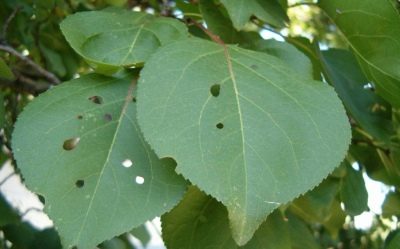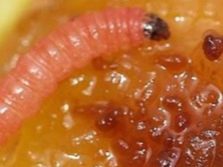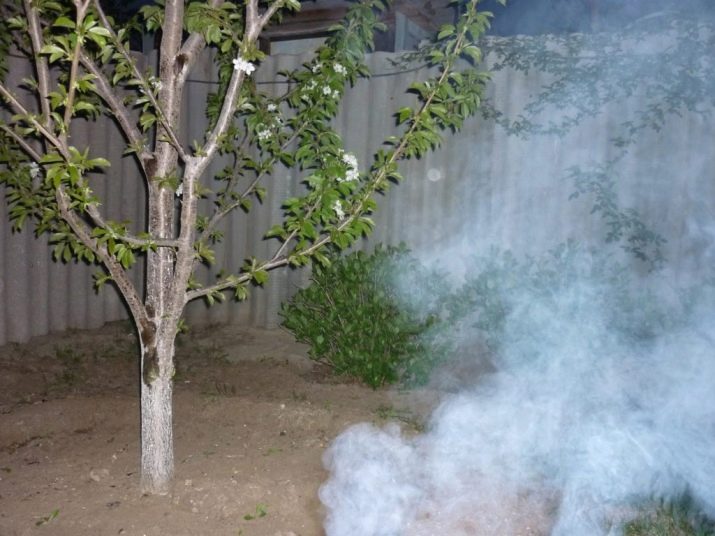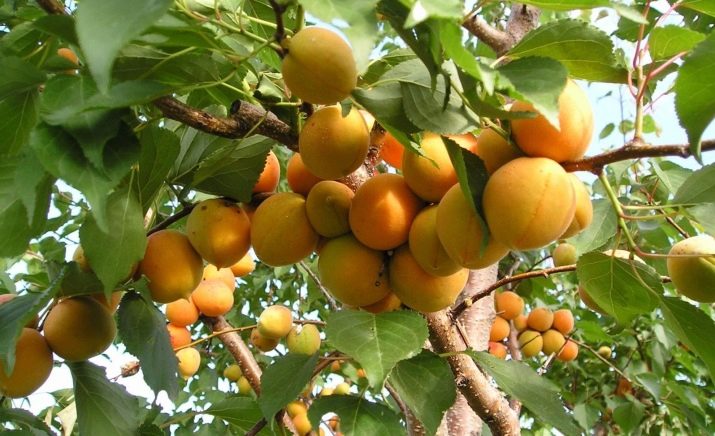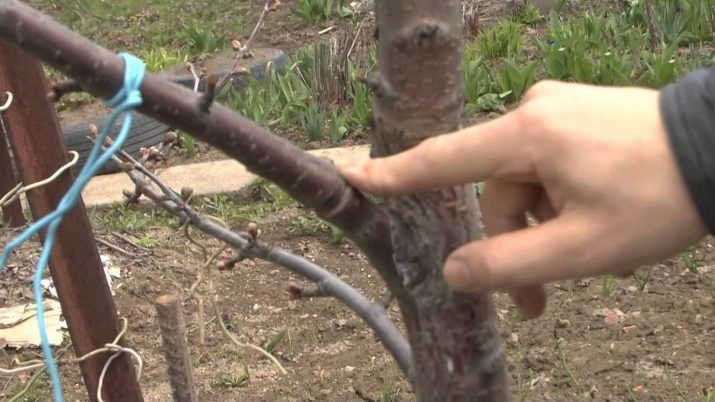Apricot does not bloom: the reasons for the lack of ovaries and ways to ensure fruiting

Amateur gardeners often complain that apricots bloom profusely, but all ovaries fall. Or no flowers at all. Consider in the article why this is happening, and what needs to be done to change the situation.
Main factors
There are several reasons why apricot does not bloom and does not bear fruit. We list the main ones.
Place and soil
The main thing that needs to be done is to take a responsible approach to the choice of landing site. The tree will grow well and delight the harvest only on light and loose moisture-permeable soils.
If the soil in the garden plot is heavy and clayey, it needs to be improved. To do this, when digging make humus, rotted manure, sawdust, you can add sand. In spring and summer, after the watering and rains, the trunk circles are necessarily loosened.
It should also be remembered that the stagnation of water, waterlogging and the close occurrence of groundwater leads to a decrease in yield and even to the death of the plant. Acidic soils are deoxidized with lime, dolomite flour. Well helps the introduction of chalk, eggshell, ash.
Apricot prefers a sunny place, protected from northern winds and drafts. Well, if the sun illuminates it from dawn to dusk.
Diseases and pests
Apricots are characterized by the same diseases as other stone fruits.
Monilioz
There may be two types - monilial burn and gray rot. Often manifested after a cold winter, when a weakened tree does not tolerate spring frosts. Just a day, the tree becomes unrecognizable: a gray bloom appears on the flowers and leaves, they become similar to burnt ones. And to foresee the disease is impossible. For protection, prophylactic treatment is carried out with 3% Bordeaux liquid before bud breaks or after leaf fall.
But you can also use the drugs "Kuproksat", "Champion", "Chorus" and "Topaz" in addition, if previous events have not brought results. Sprayed after flowering.
Branches affected by moniliasis must be cut and burned to avoid further spread of the disease. The instrument is treated with alcohol or another disinfectant solution.
Klesterosporiosis
In this disease leaves are affected. At first spots appear on them, and then holes, then sheets fall. Nutrient supply of fruits is disturbed, taste and appearance deteriorate. Harvest is not subject to storage and transportation.
As a preventive measure spray Bordeaux liquid before bud break.
When the first signs of the disease appear, they are treated with one of the following drugs: “Kuproksat”, “Chorus”, “Skor” –– according to the instructions.
Sharqa, smallpox plums
Viral disease is a danger to all stone fruit.
Fruits are affected - they are deformed, covered with spots, fall. Become unfit for consumption. It is transferred from the diseased tree to a healthy one through damage to the bark when pruning with an untreated tool.
It is important to wipe the pruner after each cut. Antiviral drugs are missing. Give preference to immune-resistant varieties.
As for pests, as well as other fruit plants in the garden, apricot is damaged by aphid, flower beetle, and moth.
Against the color eater, a good effect is obtained by treatment at the budding stage with the Condifor preparation.
To combat moth and tlyu apply "Koragen", "Intavir", "Aktar". To completely get rid of these pests, the tree must be sprayed several times during the season. The last treatment is carried out three weeks before harvesting. Preparations alternate, as pests quickly get used to them.
Care errors
The reason that the apricot does not bloom and does not bear fruit may be improper care. The complex of measures to ensure stable yields includes several items.
Timely watering without stagnant water
During the season, the tree must be watered at least four times:
- in early spring, when the shoots start to grow;
- in the summer during active growing season;
- about two to three weeks before maturation;
- moisture-charging watering in the late fall, two weeks before the steady drop in temperature.
Of course, in rainy weather, watering is not needed.
Feeding
Under young apricots make organic, mineral fertilizers - superphosphate, ammonium nitrate, potassium chloride are added to the tree trunks of the fruit-bearing ones. Good result gives autumn feeding wood ash, as it contains a lot of potassium and phosphorus. These substances are necessary for proper growth and development of the fruit.
Cropping, crown formation
Without this operation, obtaining large yields is impossible.
Sick and damaged branches are regularly cut out. In spring pruning, overlapping and inward shoots are removed. Do not allow strong thickening. The sun should evenly illuminate the entire crown.
In the summer, in June, young shoots are shortened by one third or half. Thanks to this procedure, new twigs grow, on which the budding of additional flower buds takes place. As a result, flowering will occur two weeks later and will not fall under frost.
It is better to complete the formation of the tree by the age of five, then simply maintain it in the proper state.
Not samoplodnye varieties
Apricot is a crop whose flowers need additional cross-pollination. In order to get high yields, you need to plant two or three trees of different varieties. Good pollinators are, for example, Khabarovsk, Amur, Kichiginsky. They stably and annually bear fruit, and also differ in the increased resistance to frosts. If the size of the plot does not allow for additional planting, you can plant several cuttings of self-fruited apricots on one plant.
Climatic conditions
When choosing an apricot seedling, you need to remember about the peculiarities of the climatic conditions of your area. Southern plants, planted in the northern regions, can die from frost in the very first cold winter, or will constantly freeze, ache, and recover. A healthy tree in the fall does not dissolve buds in spring. In this situation, the crop can not wait.
Flowering often falls under the spring frosts. For protection use smoke, laying out a fire at a safe distance from the trees. To ensure that apricot does not dissolve prematurely, you can treat it with preparations that include auxin (a substance that inhibits plant growth). Blooming time is shifted by about ten days. One of such means is “1-NOC”. Spraying is carried out in late autumn, spring processing is useless.
If during the bloom there is cold weather with rain and wind, pollination does not occur, and the color crumbles. And also under adverse conditions apricot resets the ovary.
It is important to buy seedlings only zoned varieties in the nearest nursery, garden farms or specialized stores.
Troubleshooting
Consider what to do to apricot regularly blossomed and pleased abundant crops.
To solve the problem, it is important to carry out all activities in the complex.
- Choose a suitable place for landing. Determine the acidity and structure of the soil. If necessary, carry out activities for its deoxidation and improvement. From autumn to prepare the landing pits, make them humus. If the groundwater at the site is close to the surface, or there is a possibility of flooding during the flood, it is better to plant apricots on a bulk elevation.
- Find out which varieties are best for the region. Buy seedlings in a gardening shop or nursery.
- Start the formation of the crown from the first year. In the summertime pinch shoots.
- In a timely manner to conduct dressing (but not excessive), watering, if necessary, the treatment of diseases and pests.
- In areas with a cold climate, young trees should be covered for the winter.
- To avoid bark heating during thaws, whiten the stems with lime mortar and scoop snow away from them.
- In the spring to protect the flowers from frost fumigate apricots with smoke or in the fall to spray with a preparation containing auxin.
As a rule, subject to all recommendations, trees bear fruit annually and abundantly.
Recommendations of specialists
If, despite the favorable conditions created, the tree is still in no hurry to give fruit, you can resort to drastic measures.
Experienced gardeners are advised to try more potent methods.
- Translation of branches from vertical to horizontal position by bending them. In order to bend a branch, it is tied to a peg driven into the ground or a load is hung on it. Ensure that the ropes do not dig into the bark, in a timely manner weaken them.
- Circular cutting of the bark on the ring. In this way, growth branches are transferred to fruiting ones. Sharply sharpened garden knife carefully make two annular incisions at a distance of five to eight millimeters from each other. At the same time try not to damage the wood. The cut bark is removed, and the resulting groove is covered with pitch. In order to reduce the likelihood of infection of the wound, you can turn the removed bark, insert it back into the incision and fix, bandage. It is necessary to begin with one or two branches, as if improperly executed, the crown may dry.
- Hauling. The best time to spend is summer, the end of July. The branches are wrapped tightly with copper wire or twine. As a result of such an operation, the supply of plant tissues is disturbed and fruit buds are laid. Care must be taken that the winding does not grow into the bark.
All these methods are far from safe. If done incorrectly, various diseases may appear, infection of wounds, weakening of the plant. As a result, you can lose not only the future harvest, but also the tree itself.
Therefore, they need to be applied only in the most extreme cases.
It should be remembered that plants are also living beings, they feel and understand love, care, attention. And thank them for their generous crops.
See how to get apricot fruit in the next video.




